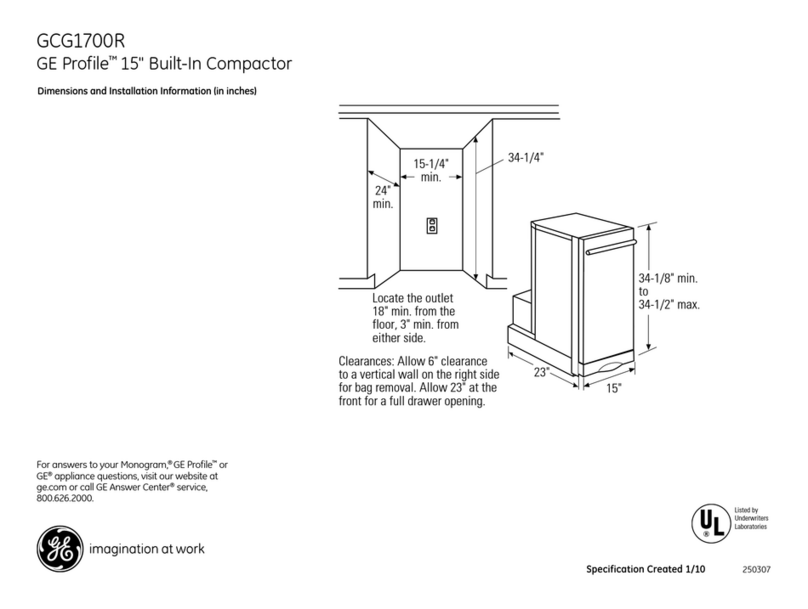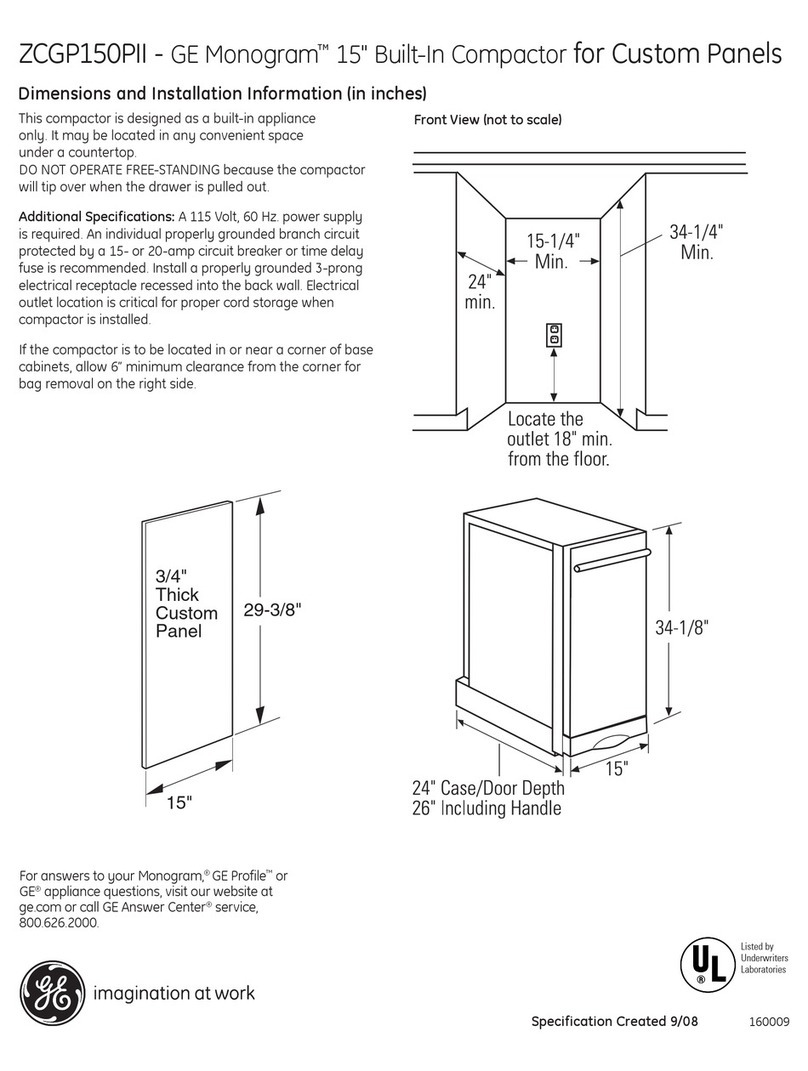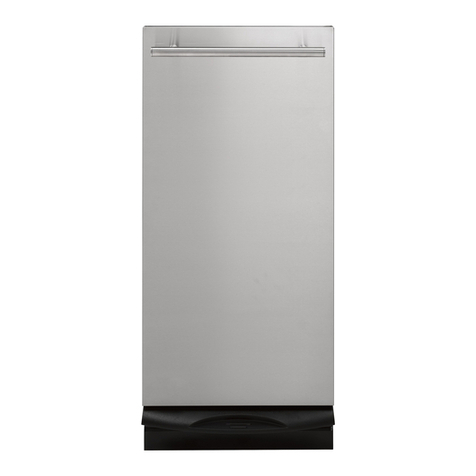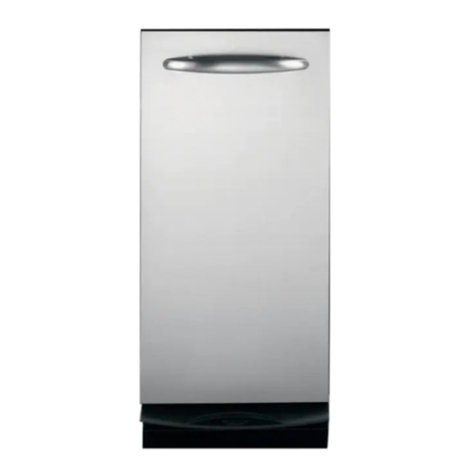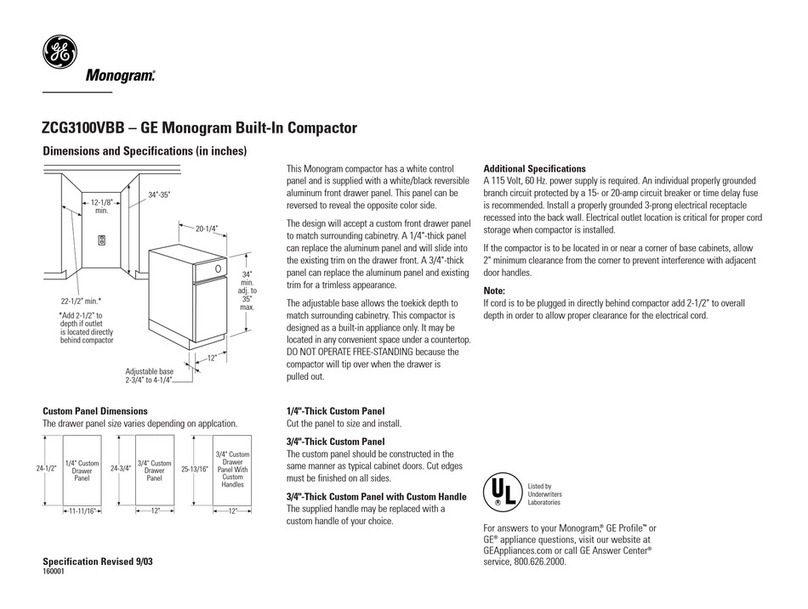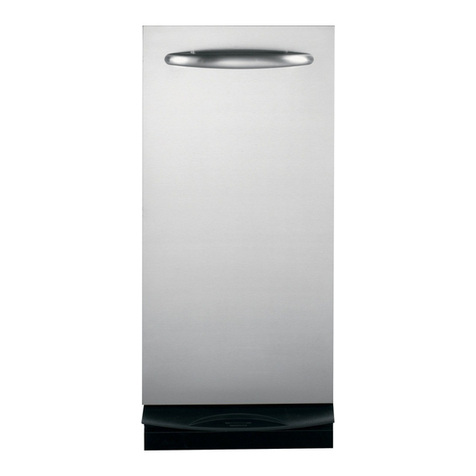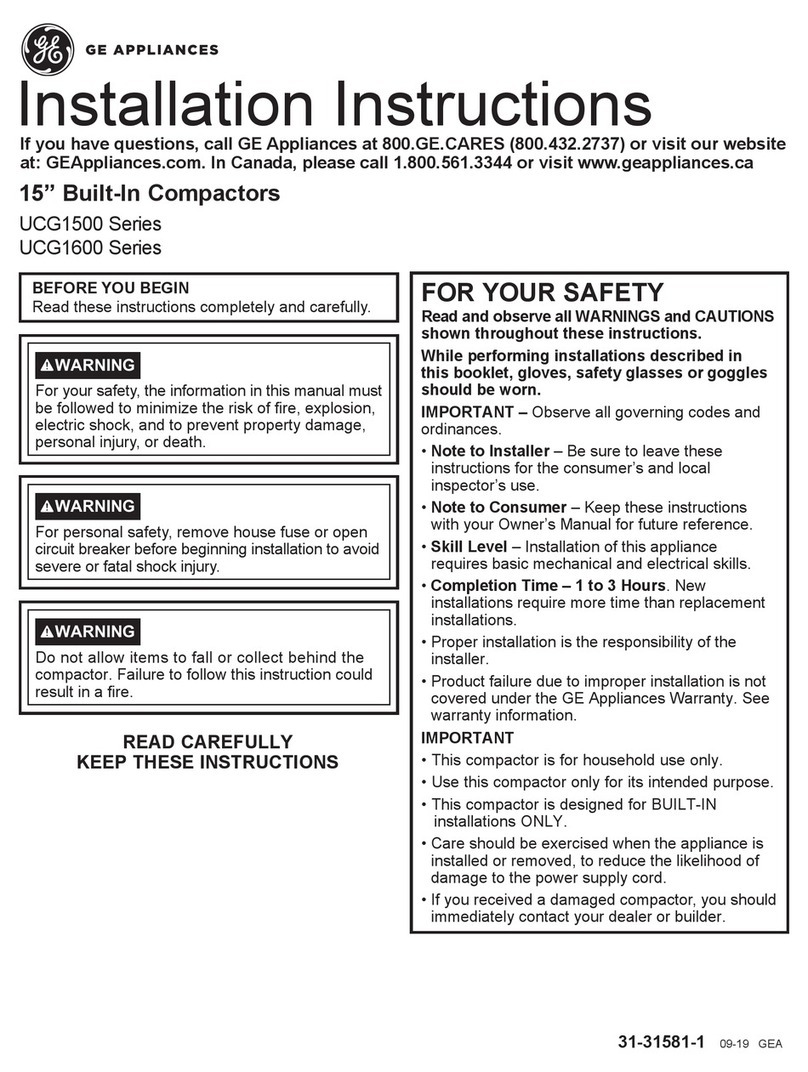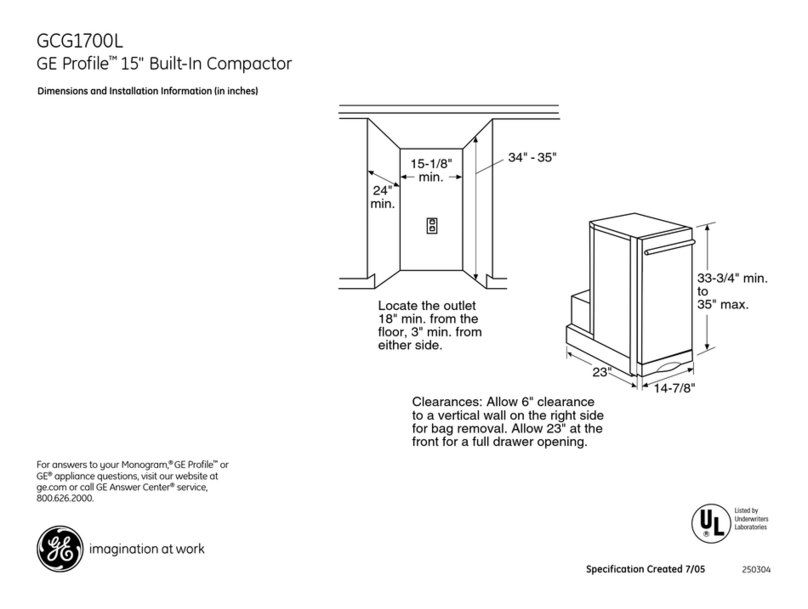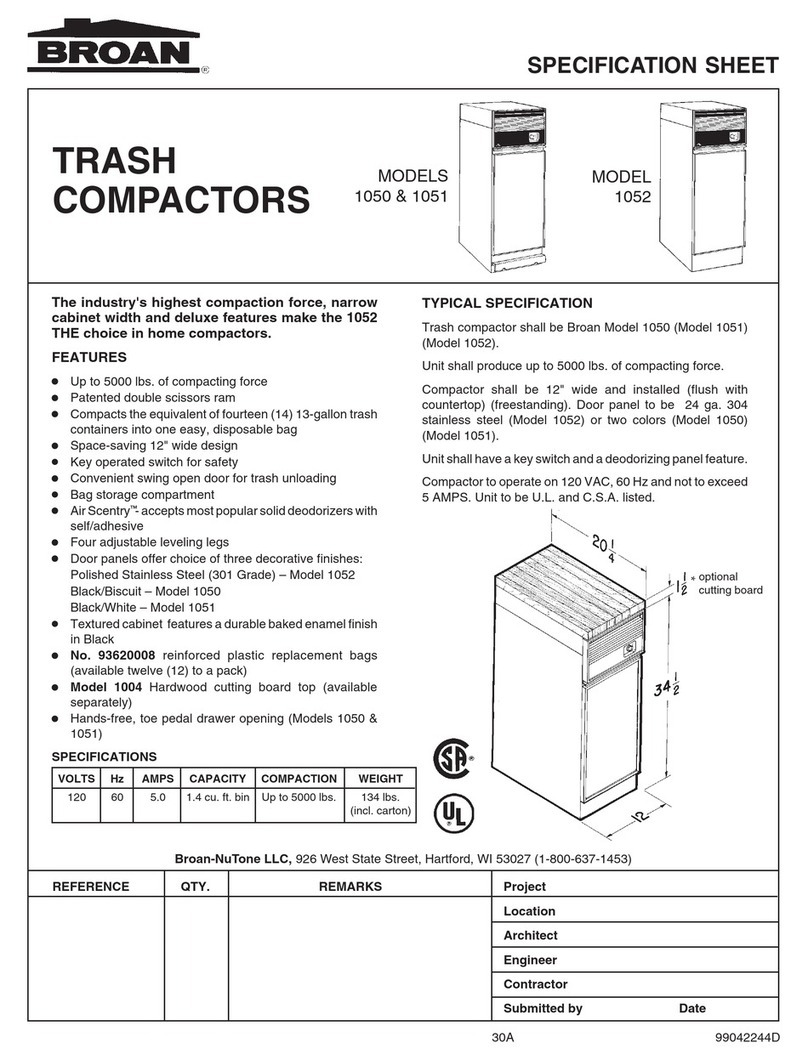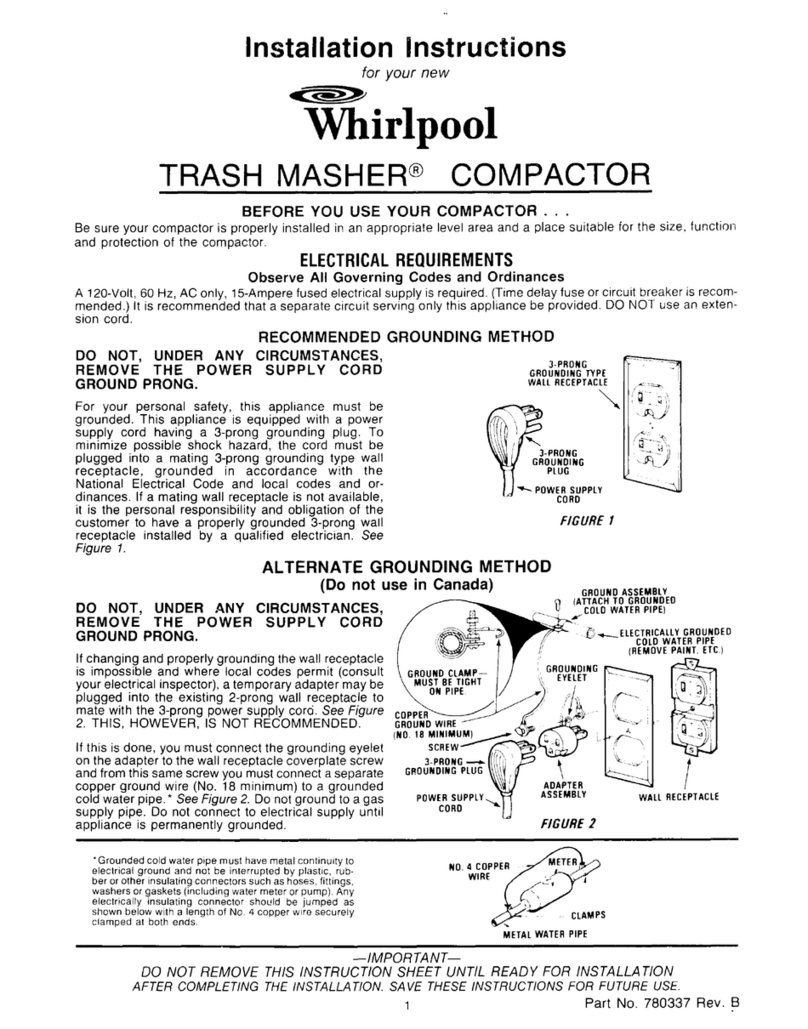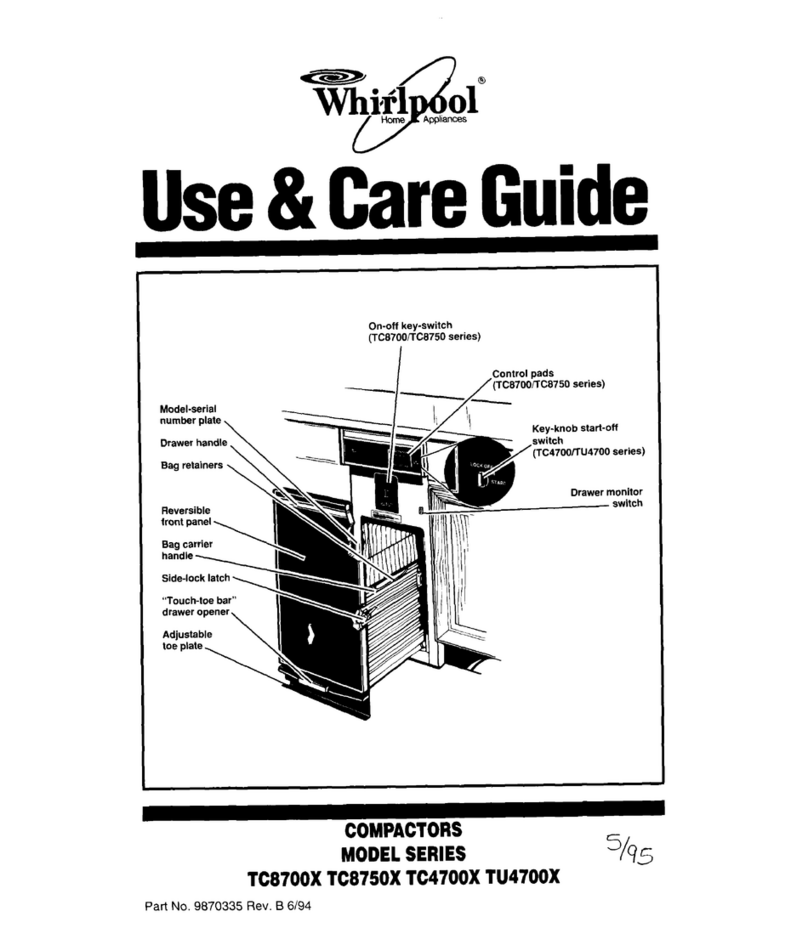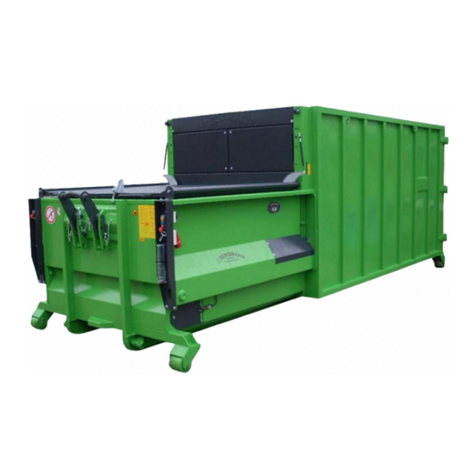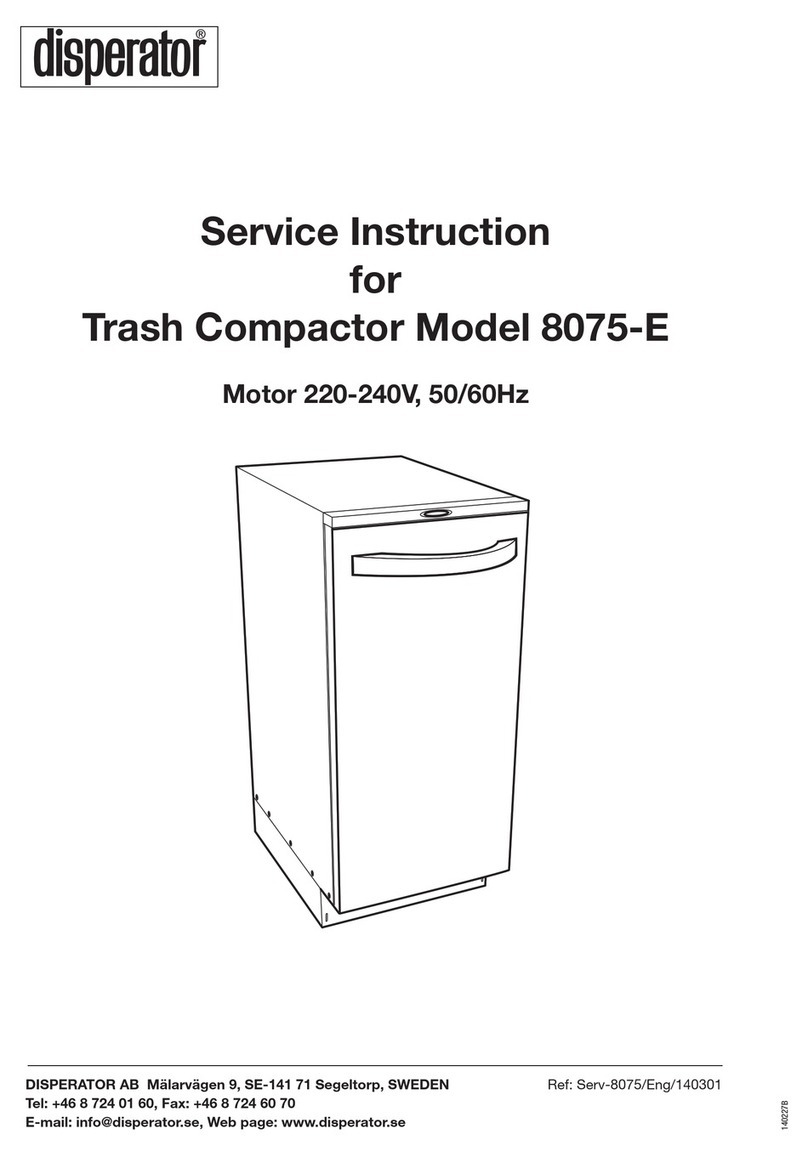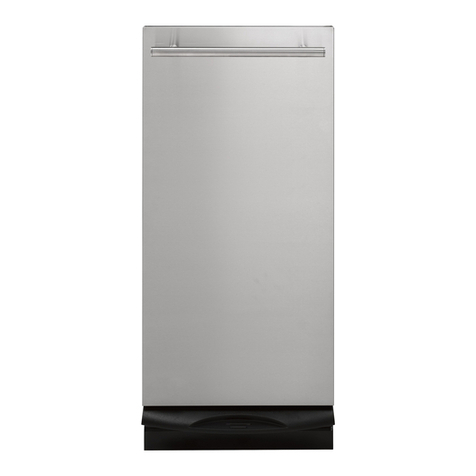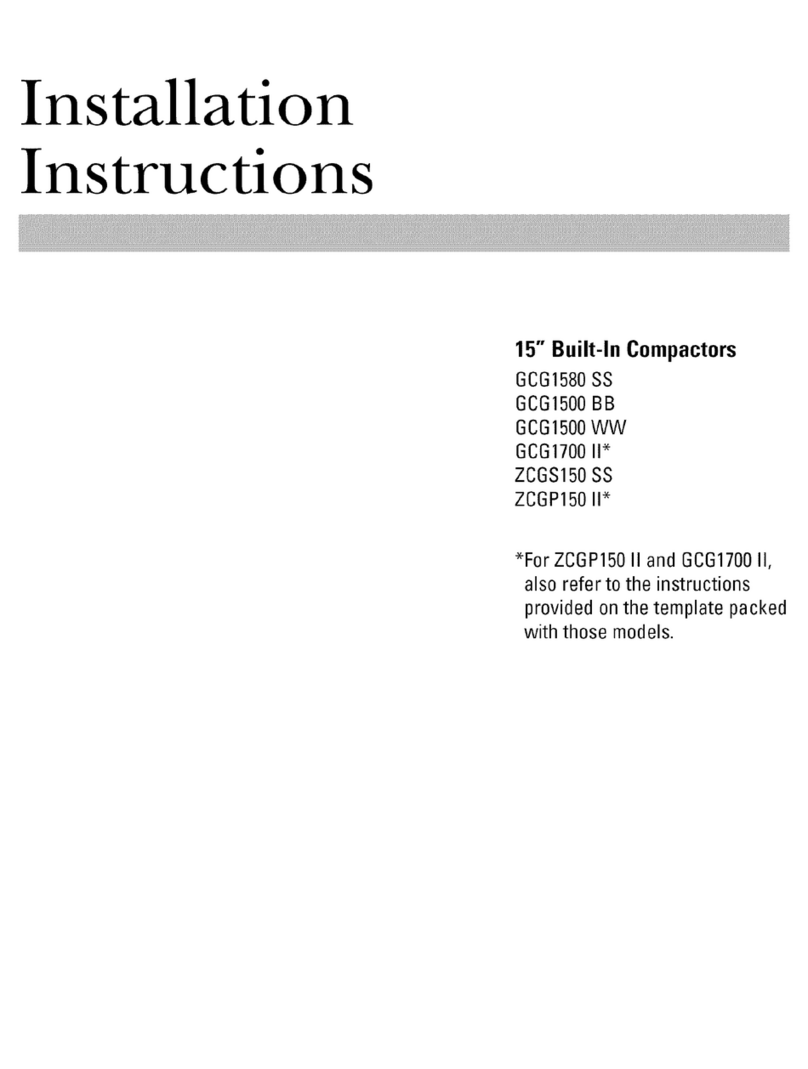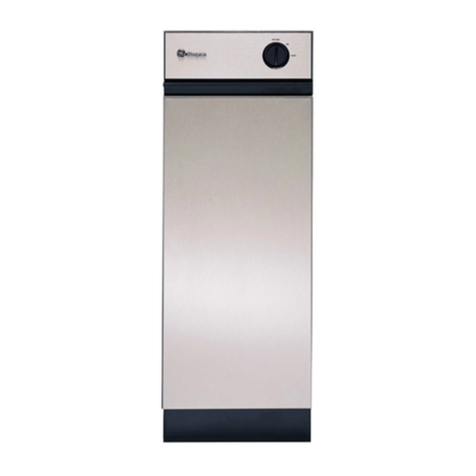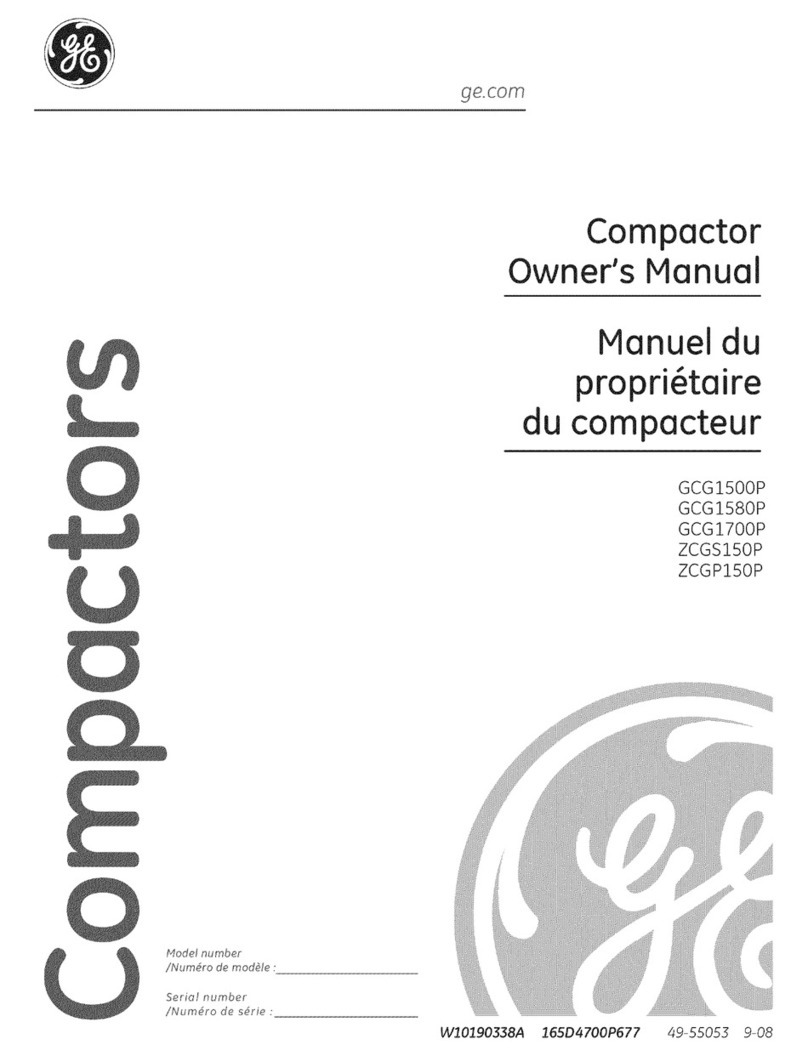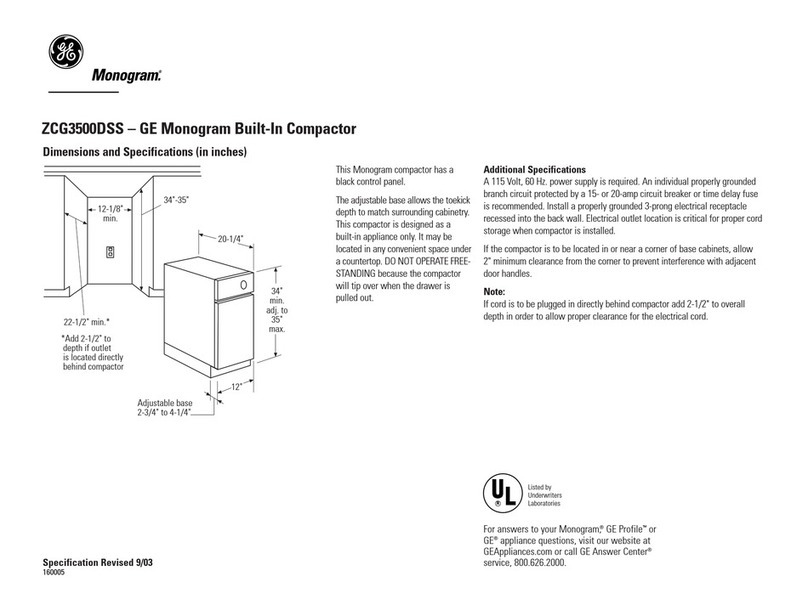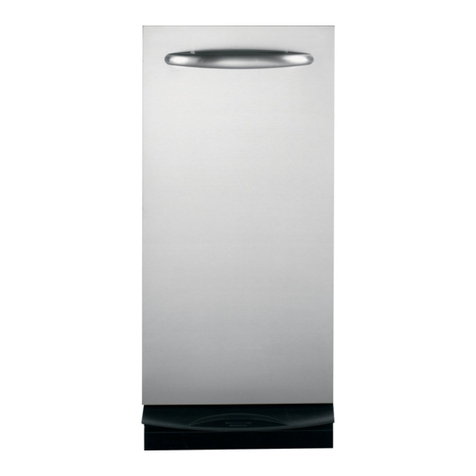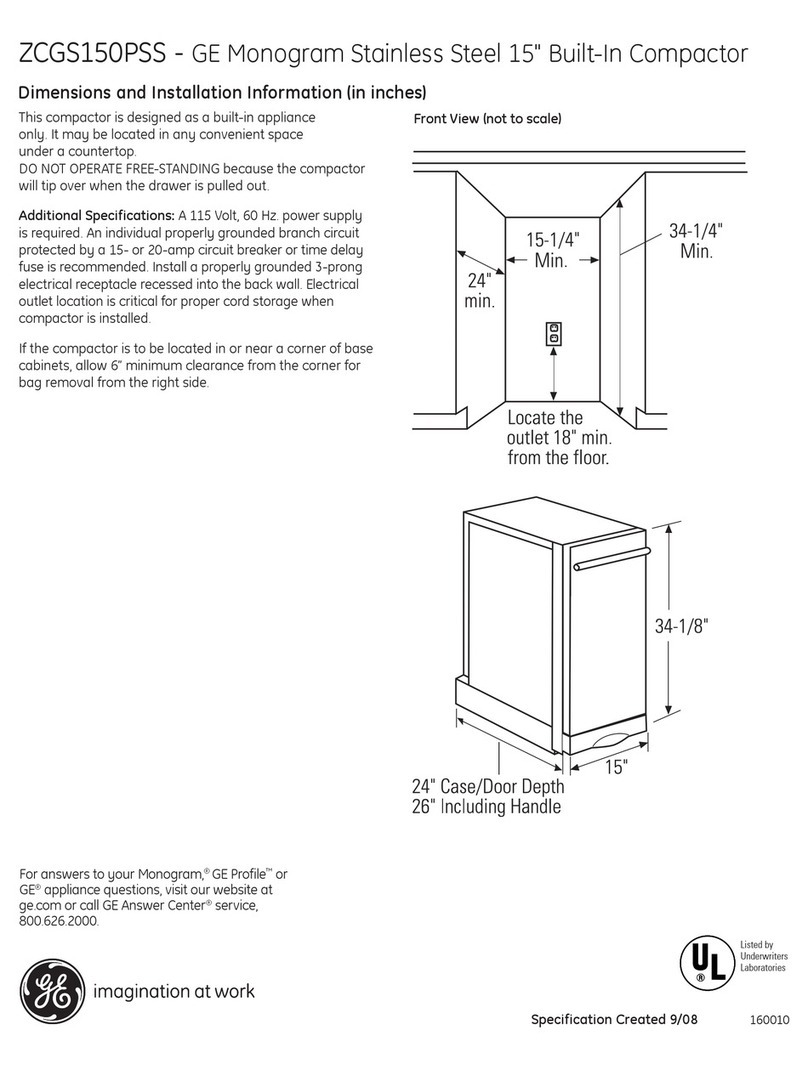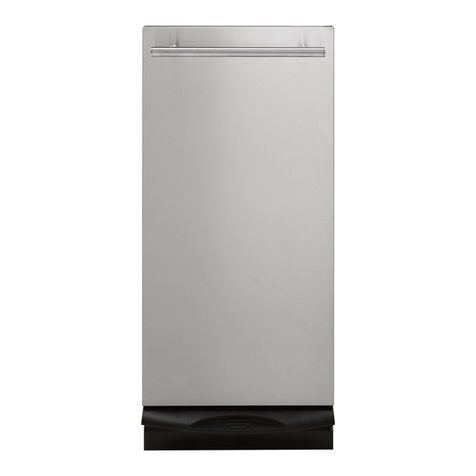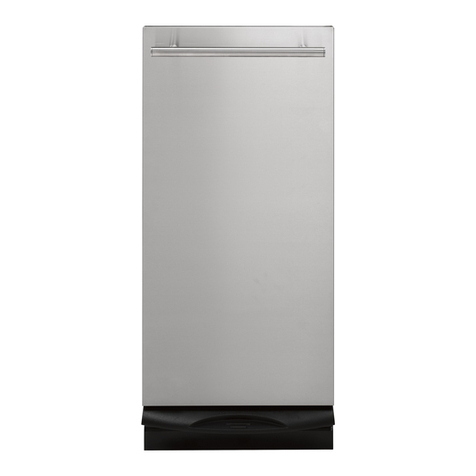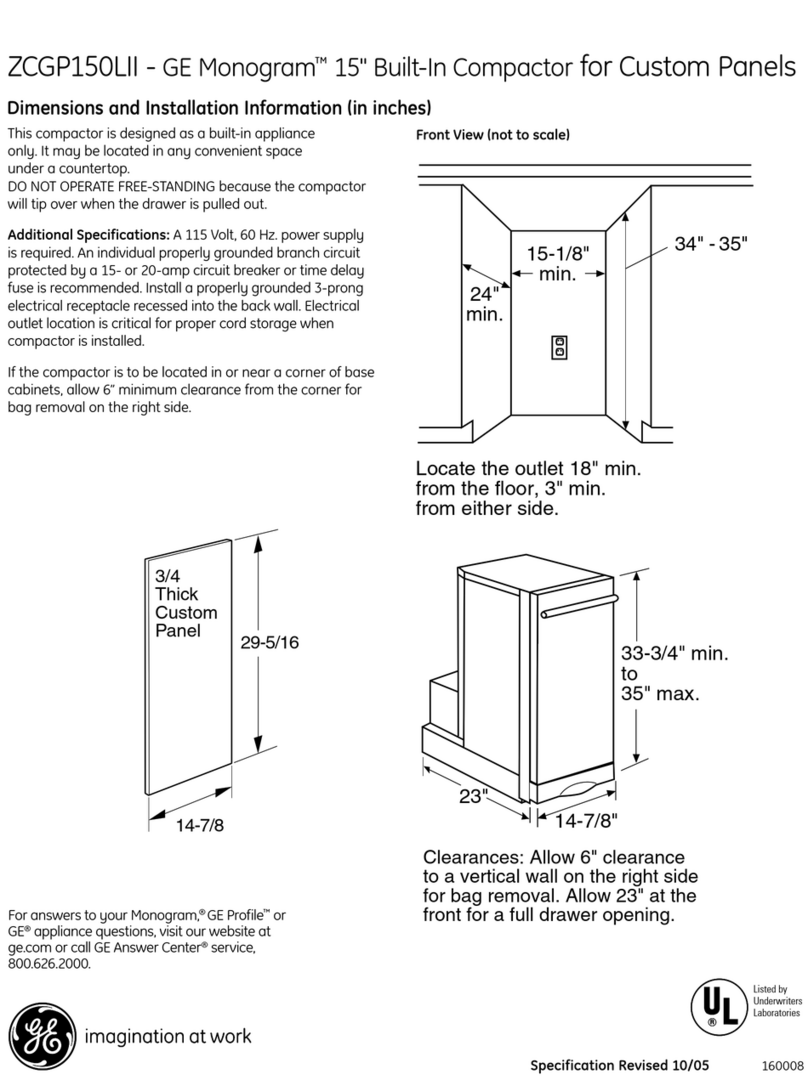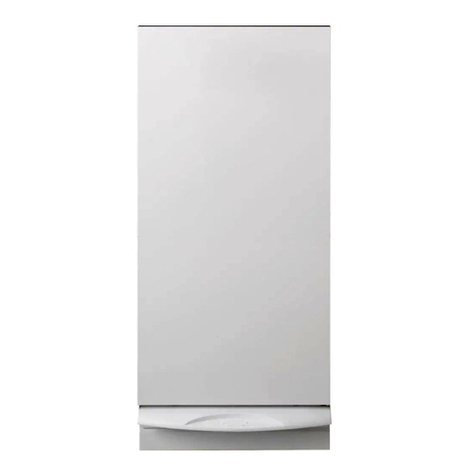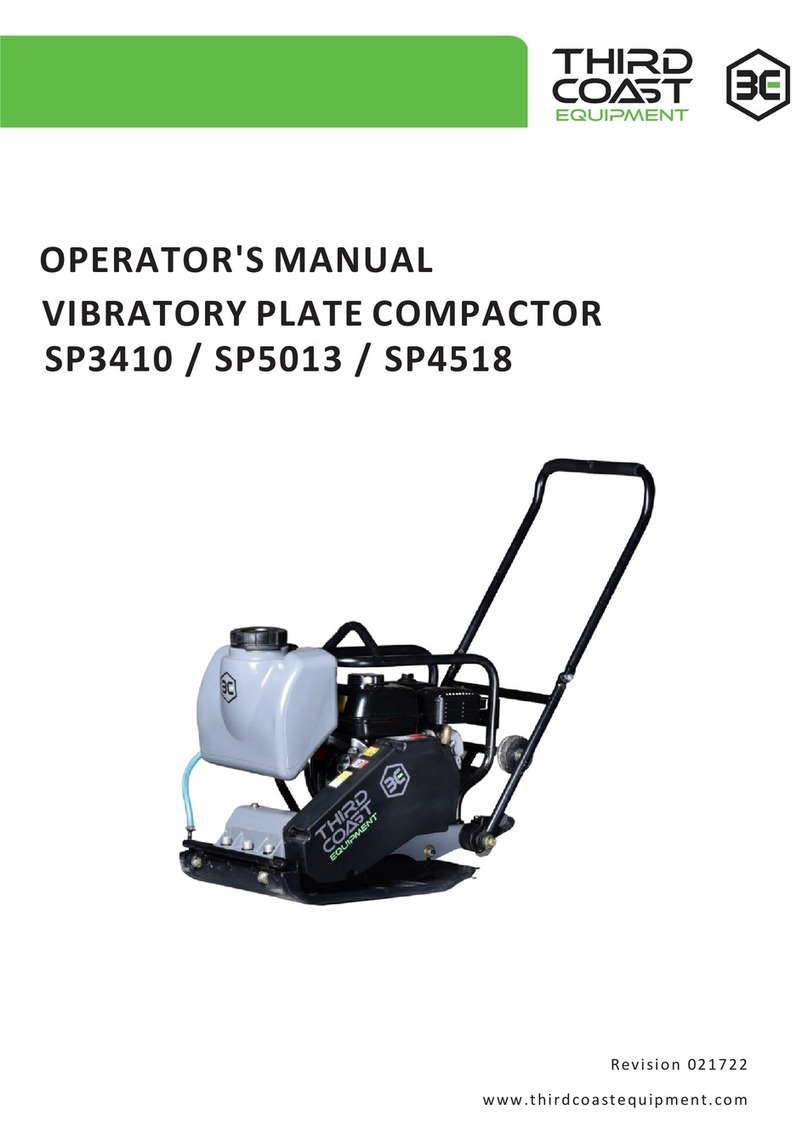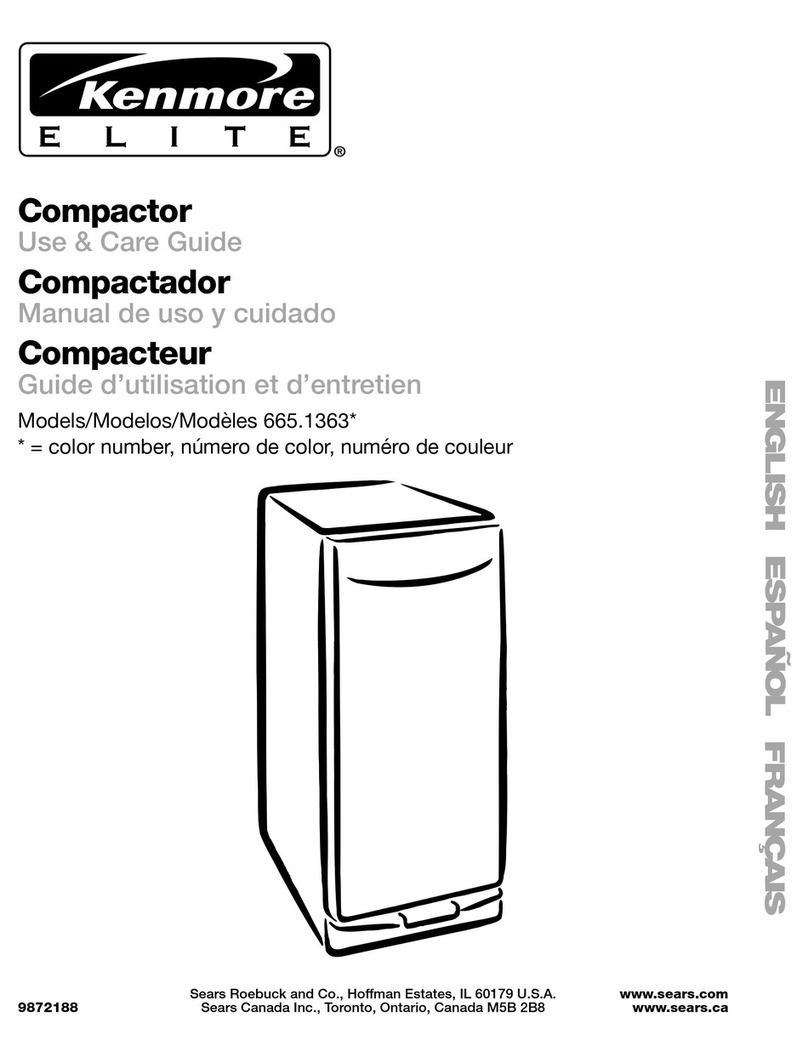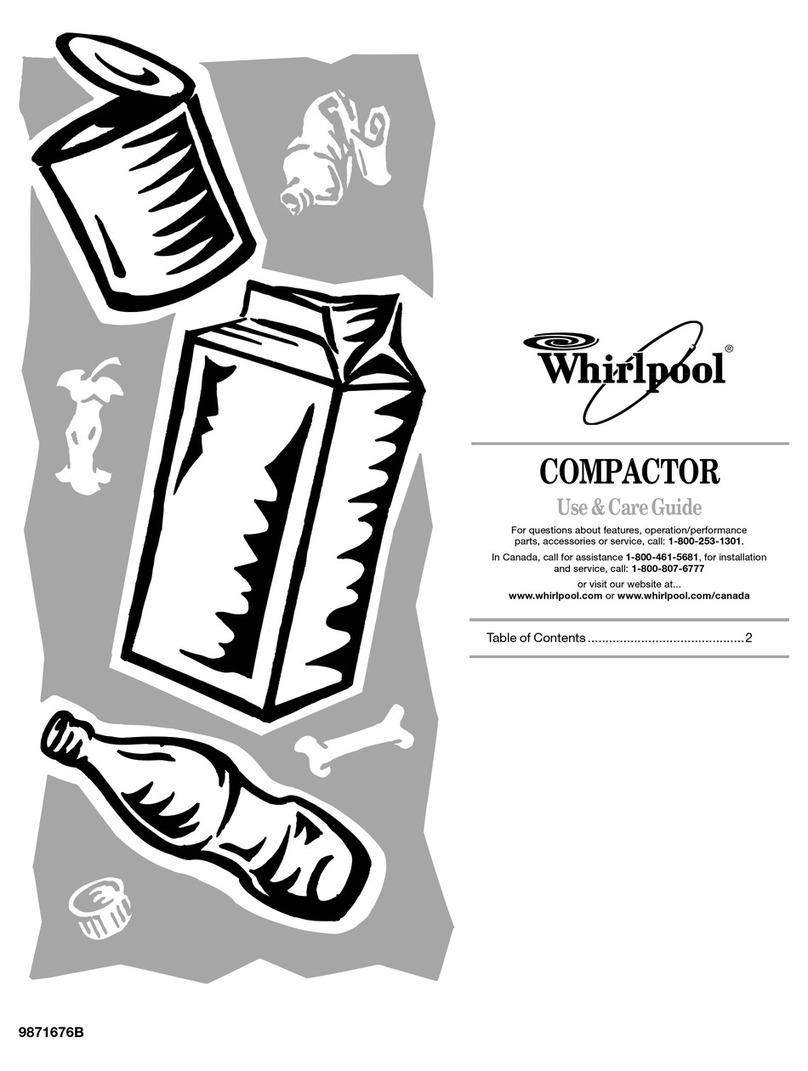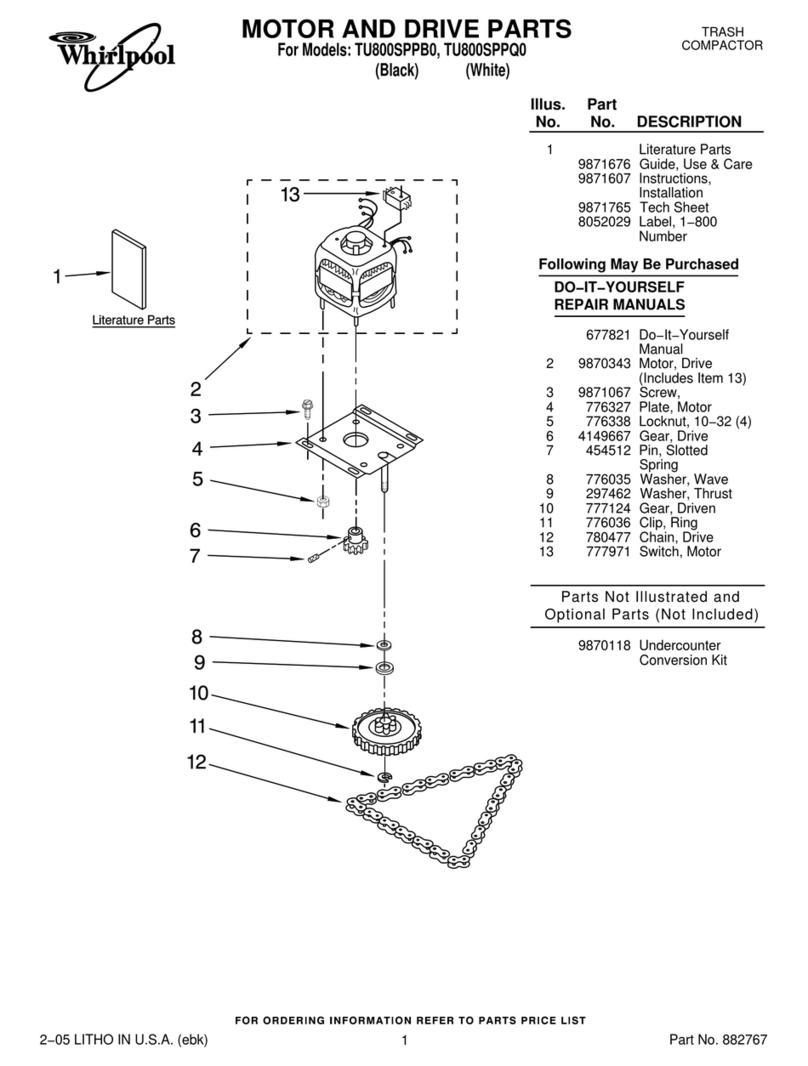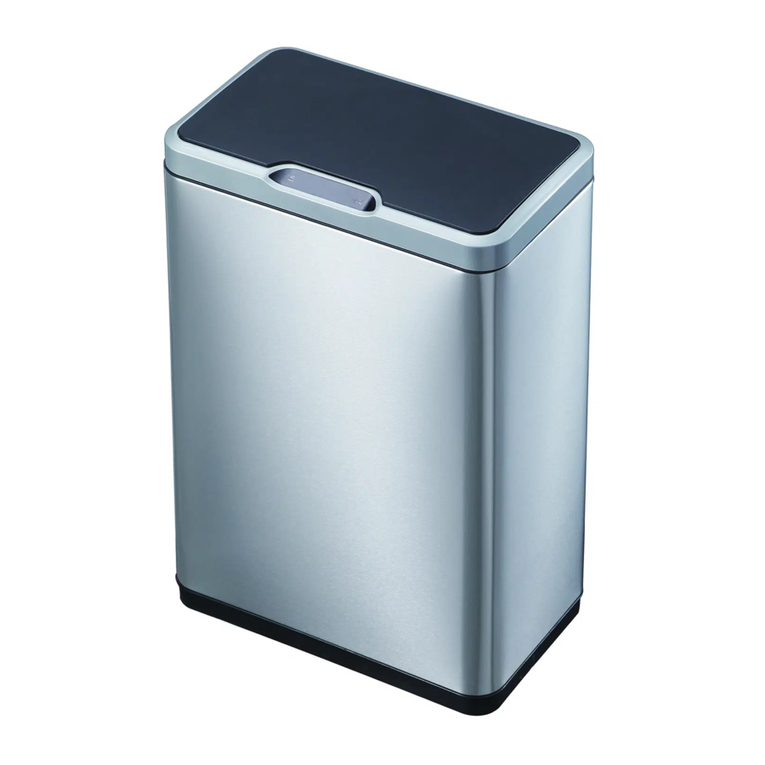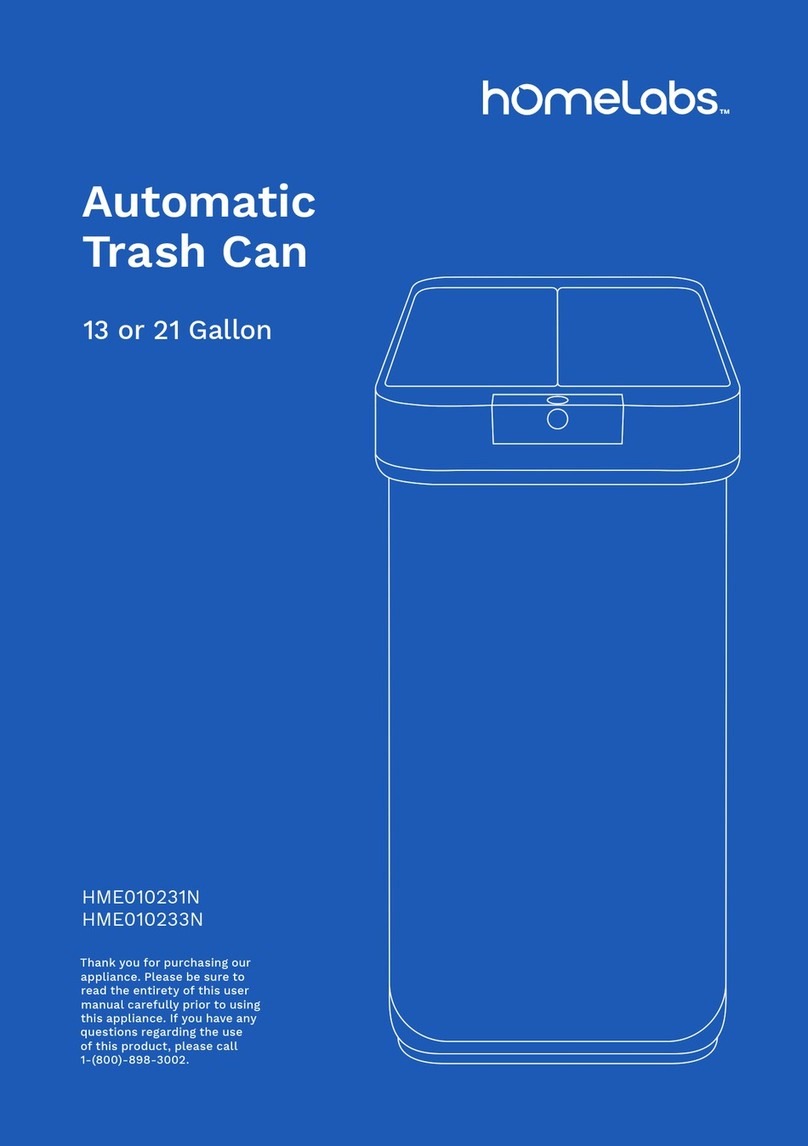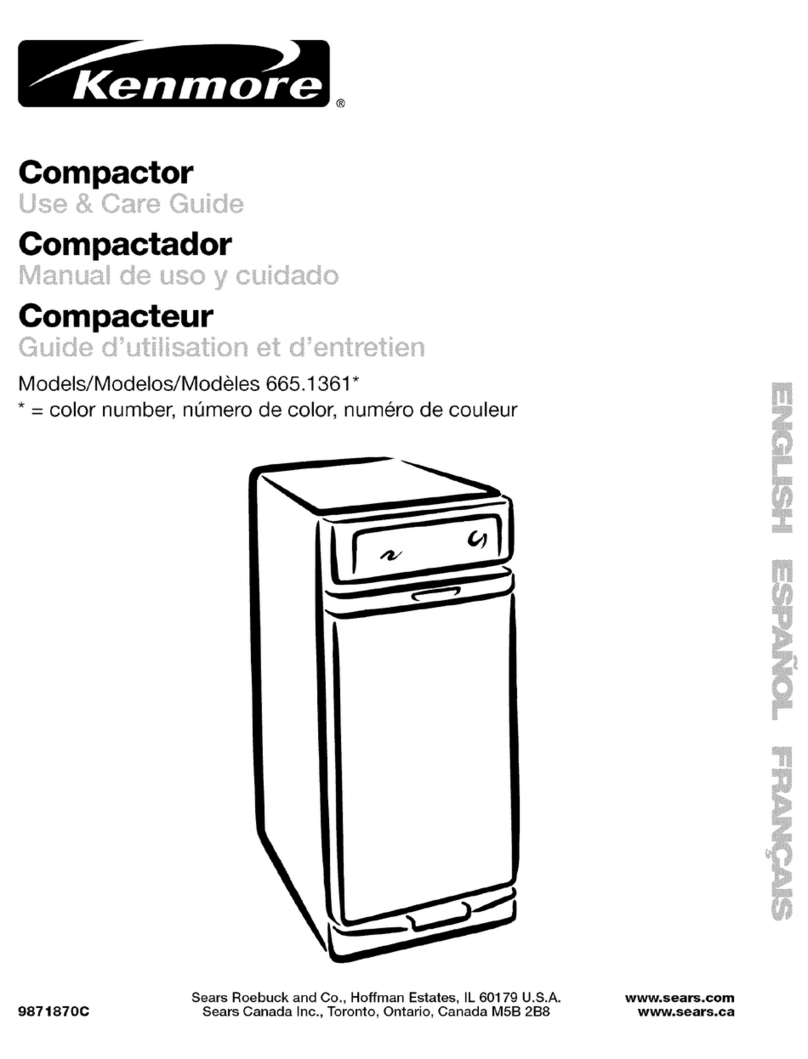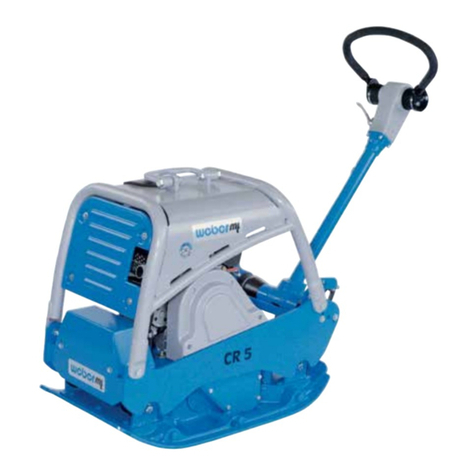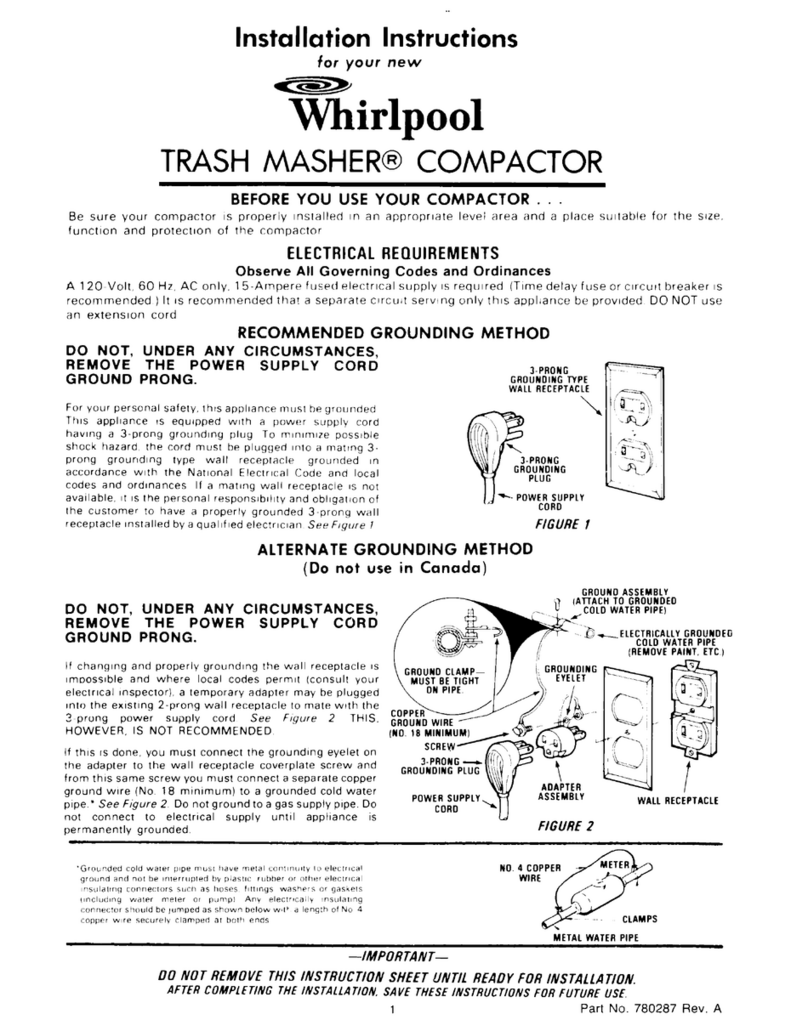
– 8 –
What It Does and How It Works
Your compactor reduces household trash to as little
as one-fourth of its original volume.
It compacts most refuse, including paper, cans,
bottles, jars, plastic containers, wrappings,
sweepings and some food wastes.
Drop trash into the disposable bag (designed for
compactor use) that lines the compactor trash
drawer and close the drawer. When you start the
compactor, an electrically-operated ram moves
down into the drawer, compacts trash, moves
back up again―and the compactor shuts off
automatically.
Note: The trash drawer must be at least 1/2 full
before you will notice compaction because the ram
does not travel all the way down into the drawer. By
adding trash, compaction is transferred to earlier
discarded items until all trash is compacted.
ON-OFF Knob
The removable knob is provided for your protection
as a safety measure. When the knob switch is in the
OFF position, the compactor will not operate.
Child Lockout Instructions:
Lock the compactor when it is not in use, by
removing the knob. This will keep children from
operating the compactor and prevent anyone from
tampering with it.
Drawer Safety Switch
The compactor has two safety switches to ensure
that the drawer is in its fully closed position before
operation. The compactor will not cycle without the
drawer being fully closed.
Trash Bag Installation
Before installing a new bag, be sure that:
1. The drawer side is securely locked.
2. The container is clean and free of sharp debris
that may puncture the bag.
Reinforced plastic bags came with your compactor
and are ready to be installed.
You must use the specially designed heavy-duty
trash bags included with your compactor. These
bags are available from your dealer or Factory
Service Center. Ask for catalog number WC60X5017.
If you prefer, you can order by mail. A handy
order form is provided with your compactor and is
included in every replacement bag package.
To install a new bag:
1. Place the bag in the drawer. Open the bag and
pull the top edges over the drawer top.
2. Lock the bag in place
by pulling the four
prepunched holes over
the bag retainer buttons.
Holes will expand over
the buttons without
harming the bag.
3. Press inside of bag
against the drawer
bottom, sides and
corners for a smooth fit.
Loading
Slightly lift and pull the
compactor door handle or
press the foot pedal and pull
the drawer out.
Remember:
To help keep the ram clean
when compacting messy food waste, place a
couple of folded sheets of newspaper on top of
the load to be compacted.
An item that is too bulky to go into the drawer
can be folded to fit. If an item cannot be folded
to fit into the drawer, do not force it in.
Folded newspaper is also helpful when
compacting a large glass bottle, or several
bottles or jars, or any other item that might
shatter.
Although it is not necessary to compact until
the drawer is full or nearly full, we suggest that,
for maximum compaction, start the compactor
each time a significant amount of trash is
added.
Using the Built-In Compactor
(Continued next page)
